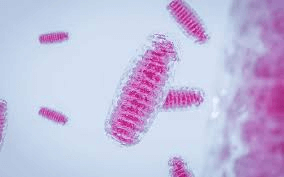Intrigued, Liu phoned the sender, biologist Joseph Mougous of the University of Washington, and it quickly became clear that the bacterial toxin had a talent that was indeed useful for what Liu does: invent ways to edit genes. On Wednesday, they and their colleagues reported in Nature that they had turned the toxin into the world’s first editor of genes in cell organelles called mitochondria.
If all goes well, the discovery could provide a way to study and, one day, cure a long list of rare but devastating inherited diseases resulting from genetic mutations in the cell’s power plant.
“We’ve been looking for a technology like this for a very long time,” said biologist Fyodor Urnov of the University of California’s Innovative Genomics Institute, who reviewed the paper for Nature. “We’ve been able to make point mutations” — changing a single letter of DNA — “in human nuclear DNA for 15 years, but mitochondria have resisted that furiously, much to the great frustration of everybody. With this technology, mitochondrial research will enter a golden age.”
The hundreds of capsule-shaped mitochondria inside every cell turn oxygen and nutrients into the chemical energy that powers a cell’s metabolism. Mitochondria also metabolize cholesterol and synthesize hormones and neurotransmitters. If one of their 37 genes is aberrant, mitochondria can’t perform, resulting in any of hundreds of mitochondrial diseases. The most devastating, including “mitochondrial DNA depletion syndrome” (MDDS), destroy children’s muscles and brains, and eventually take their lives.
The genome editing revolution has largely passed mitochondria by. CRISPR doesn’t work: The guide RNA it uses like a bloodhound to find its target within a genome can’t penetrate mitochondrial walls. Earlier editors, such as TALENs, can eliminate mutations in mitochondria in cells growing in lab dishes, but only by destroying the DNA. Nothing couldnfix mutations by changing one DNA letter into another, such as a C to a T or a G to an A.
“Mitochondria,” said Liu, “are one of the last bastions of DNA that has resisted precision genome editing.”
Mougous’ email suggested a way around that resistance. He studies the chemical warfare that bacteria wage against other bacteria. The chemical weapon he’d just discovered, secreted by Burkholderia cenocepacia bacteria, is an enzyme that infiltrates an enemy bacterium and kills with lethal simplicity: It causes single-letter genetic mutations in a bacterium’s double-stranded DNA. At every targeted spot, it leaves the bacterial DNA in tatters. The bacterium dies. Mission accomplished.

Liu’s first question, on a phone call that began in an Uber and continued into the Broad’s lobby, was: Aren’t bacterial toxins, um, toxic? “If this thing ran rampant inside human cells,” he recalled thinking, “you’d probably have the same consequences as with the bacteria warfare: The cell would be dead. I asked, how are you going to tame the beast?”
Liu’s graduate student Beverly Mok figured out how. Splitting the enzyme, called a deaminase, into two harmless halves kept it from killing cells. But half an enzyme isn’t a genome editor. So Mok fused each half to proteins that find their way to specific regions of mitochondrial DNA. There, the halves reassembled (this was all in lab dishes) and did their thing: precisely editing the target DNA.
Like Liu’s first CRISPR base editors, this one has a mediocre efficiency. When the scientists aimed it at five genes in human mitochondria, it edited roughly 20% to 40% of its targets by three to six days.
“There is room for improvement,” Urnov said, “but the history of this field tells us that something that starts at 20% efficiency can, with technical optimization, get to 80% and above.”
And just as the first base editors, which could only change a C to a T and a T to an A, were quickly joined by those able to change A to G and T to C, so the mitochondrial base editor should soon be joined by cousins that make other changes.
Repairing the genetic problem, “I think, is the way to go,” said the father (who lives outside New York City and asked not to be identified so as to protect his son’s privacy). “It really is the holy grail.”